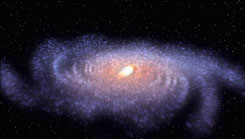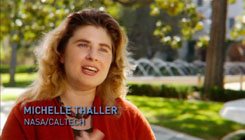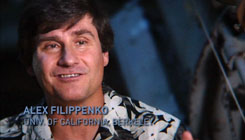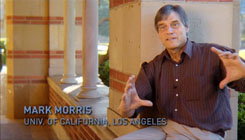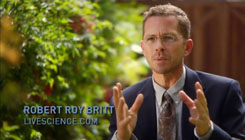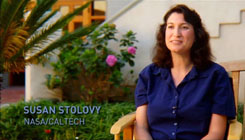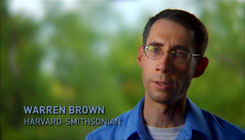This episode is a fascinating look at the geography of our galaxy,
how we are hindered at seeing it properly or directly,
and the history of the methods employed to learn about it.
Our own solar system takes about 250 million years to orbit the center of the galaxy,
and has only done so approximately 18 times since it formed.
The star Mira A is leaving a wake of hot gas behind it as it plows through the dust of
one of the Milky Way's arms, a tell-tale trail of where it has been for the last 30,000 years
in its orbit around the galactic center.
Other highlights include the Sagittarius A object - thought to be a supermassive black hole
at the center of our galaxy, how galaxies evolve and change shape when interacting with each other
and the Milky Way's associations with small, local group galaxies such as
the Large and Small Magellanic Clouds which also orbit the Milky Way from a safe distance.
The most memorable moment of the episode that blew my mind
(and a definite season two highlight) was the
bombshell dropped by astronomer Michelle Thaller:
"Just recently, we've discovered that there are two small galaxies
colliding with the Milky Way right now,
and the only reason we didn't know they were there
is because there was so much dust in the disc of our galaxy,
we couldn't see them.
We're living inside this cloud, and it's something we're not aware of.
But with infrared light, you can cut through that dust.
And the minute we turned infrared telescopes to the sky,
we saw these little galaxies up there, coming right at us."
from the disc sleeve:
The Milky Way:
Come along, Pond, for a guided tour of the 100,000-light-year-wide family of stars
and stellar phenomena we call the Milky Way. Within this galaxy explore the debris of
old, dying stars fueling the birth of new stars, while hypervelocity stars get
catapulted beyond the Milky Way's outer rim at unimaginable speeds.
Okay, I lie - the disc sleeve doesn't actually say "Pond", but
Michio Kaku isn't alone here in being a
Doctor Who fan.
Nudge nudge, wink wink.
Chapter List:
- Introduction
- The Neighbourhood
- Technology
- Gas and Dust
- Gravity
- Expansion
|
Participants include:
|

